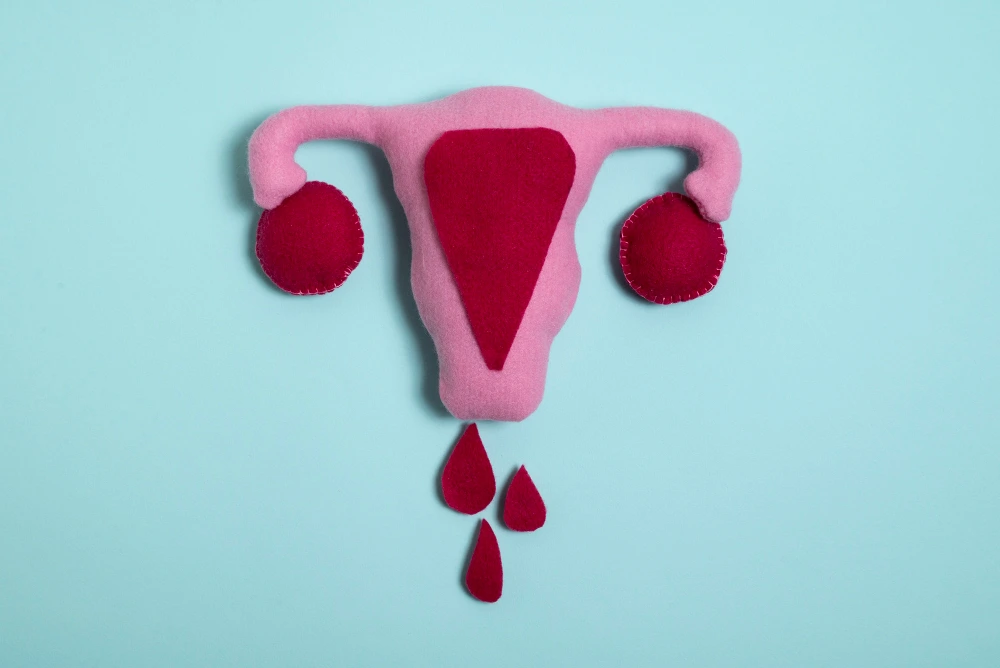
[adinserter block=”3″]
Experiencing brown discharge two weeks after a menstrual period is a common occurrence that can be worrisome sometimes. Various factors may cause this brown discharge. Sometimes, This happens because old blood takes longer to come out and turns brown.
A few other reasons may include that the hormones controlling the period can sometimes get mixed up, making the blood take longer to come out and look brown. If a woman tries to conceive, the fertilized egg may attach to the uterine lining, causing slight bleeding. This can occur around the time of the expected period and manifest as brown discharge.Also, when people feel stressed or change their lives, it can mess with the period and cause this brown discharge.
Most times, it’s okay, but if it happens a lot or comes with other problems, it’s good to talk to a doctor. Also, Understanding possible causes can make you aware of the alarming health conditions. Read more on this blog to know all the possible factors that may cause brown discharge 2 weeks after periods or menstruation.
What Is Brown Discharge?
Brown discharge is vaginal fluid mixed(cervical mucus) with old blood.
Depending on various factors, it can appear light to dark brown and may have a thicker or thinner consistency. This discharge is not a cause for concern and is often related to the menstrual cycle. When blood takes longer to exit the uterus and oxidizes, it can turn brown before being discharged. However, if the brown discharge is persistent, has a foul odor, or is accompanied by other unusual symptoms, it is advisable to consult a doctor for proper evaluation.
Why Am I Experiencing Brown Blood Two Weeks After Periods?
Here are the top possible causes for experiencing brown blood two weeks after periods:
1. Ovulation Spotting
Ovulation spotting is when some people see light bleeding or spotting during ovulation when an egg emerges from the ovary. It usually happens in the middle of a woman’s monthly cycle. This cyclical process is your body’s preparation for a potential future pregnancy.
Sometimes, it can lead to bleeding, showing up as a brownish discharge. It’s called ovulation spotting, and it’s usually nothing that you should worry about.
2. Implantation Bleeding
Brown blood two weeks after periods can happen because of implantation bleeding, which is linked to the menstrual cycle and early pregnancy changes. Usually occurring around the expected period, when a fertilized egg attaches to the uterus lining, it may lead to some bleeding. This often matches the two-week mark after the last period.
3. Older Blood
The blood that comes out during a period doesn’t always leave the body immediately. Sometimes, it takes a bit longer and changes color because of something called oxidation. This turns the blood from red to brown, and that’s why you might see brown discharge.
4. Hormonal Fluctuations
Hormonal fluctuations, especially variations in estrogen and progesterone, can lead to delayed shedding of the uterine lining. This delay may result in older blood being expelled, oxidizing and causing brown discharge 2 weeks after periods. It is why you might see brown discharge after your period. Research shows that hormones play a big role in changing the color of menstrual blood.
5. Contraceptive Use
Birth control methods with hormones, such as pills or hormonal intrauterine devices (IUDs), can change how the blood comes out during your period. This might make the uterus lining take longer, leading to older blood turning brown when it leaves. Studies show that these changes are a known side effect of using hormonal contraceptives. So, if you are using Contraceptives and getting a brown discharge, it is completely normal and nothing to worry about.
6. Infections
Sometimes, after periods, infections like bacterial vaginosis or sexually transmitted infections (STIs) can make your discharge turn brown. These infections mess up the usual balance inside, making things inflamed and changing the color. Research has backed that having an infection can make brown discharge show up, along with other problems. If you think you have one, it’s really important to see a doctor to get the right help.
7. Uterine polyps or fibroids
Sometimes, uterine growths, like cysts, polyps or fibroids, can make brown discharge occur after periods. These are not harmful, but they can mess up how the uterus sheds its lining. This delay makes older blood come out, and that’s why it looks brown. Studies show that these growths can change how periods happen, including the color and texture of what comes out.
When To See A Doctor For Brown Discharge After Periods?
If you see brown discharge after your periods and:
-
It keeps happening for many cycles.
-
Comes with a bad smell, makes you itch, or hurts.
-
The color or how it feels changes a lot.
-
You are worried about getting pregnant or fertility.
Conclusion
Noticing brown discharge 2 weeks after periods can happen because of different things, like hormone changes, spotting during ovulation, or using birth control with hormones. Usually, it’s okay, but if it keeps changing or worries you, it’s important to talk to a doctor. They can check everything and advise you, helping you stay healthy. Knowing about brown discharge helps you make good choices and care for yourself.
Frequently Asked Questions
Is brown discharge two weeks after my period normal?
It’s normal and can be attributed to ovulation spotting or residual menstrual blood. However, any concerns should be discussed with a healthcare provider.
Should I be worried about brown discharge if I’m trying to conceive?
Not necessarily. Implantation bleeding, which can be associated with brown discharge, is a potential sign of pregnancy. However, it’s not a guarantee, and consulting with a healthcare professional is advisable.
Can contraceptive use cause brown discharge?
Yes, hormonal contraceptives can influence discharge color during the adjustment phase. If you notice changes, it’s often a temporary adaptation to the hormonal shifts.
When should I seek medical guidance for brown discharge?
If the brown discharge is accompanied by persistent itching, a foul odor, pelvic pain, or irregular menstrual cycles, it’s advisable to consult with a healthcare professional for a thorough assessment.
Can infections cause brown discharge?
Yes, infections like sexually transmitted infections (STIs) or bacterial vaginosis can contribute to changes in discharge color. If an infection is suspected, seeking prompt medical attention for diagnosis and treatment is essential.
[adinserter block=”3″]
Credit : Source Post






